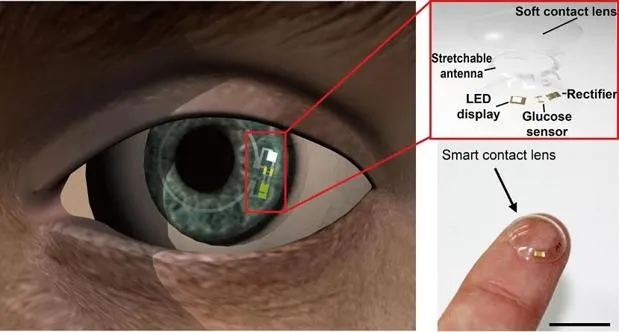The contact lens measures glucose levels in the tear and carries a light that warns the patient when an episode of hyperglycemia occurs.
More than 422 million people worldwide are dedicated to evaluate, or as doctors say, ‘monitor’, their glucose levels to verify that their treatment is working.And for this, you just have to use a glucometer.
However, it is possible that in the near future your finger, one or several times a day, for this blood sugar monitoring.And it is that researchers from the National Institute of Science and Technology at Ulsan (South Korea) have designed a ‘intelligent’ lens capable of measuring glucose levels in tears.
As Jihun Park, director of this research published in the magazine «Science Advances», “Our technology, already tested in rabbits, is the first to apply a visualization device in a soft contact lens to see glucose levels.A strategy that could be used one day for the screening of prediabetes and daily glucose monitoring ».
Soft, comfortable and ‘intelligent’
The concept of ‘Smart Lentilla’ is not, much less, new.Not even in the approach to diabetes, a disease for which other contact lenses have already been designed - even in the research phase and, therefore, not usable in the world 'real' - capable of measuring glucose levels fromof tears.So where is the novelty?Well, in the lentilla itself.
As the authors indicate, “our technology does not require the expensive tools or fragile components current.In addition, these symptoms usually require bulky equipment to measure the signals sent by the slowdown sensors ».
The new technology could be used in the near future in the screening of prediabetes and the daily monitoring of blood glucose levels.
In order to solve these problems, the authors have developed a slowdown that includes transparent and totally flexible glucose nanosers and wireless circuits - not via Wi -Fi - energy transfer.And what is more important, a visualization device capable of quantifying and showing glucose levels in real time, thus eliminating the need for other components, usually 'bulky' - even on a scale in nanometers -, for this measurement.
Specifically, the device, totally wireless, contains an antenna, a rectifier and a small LED screen that responds to changes in glucose levels with the help of a graphene sensor.Thus, and when the sensor detects a level of glucose in the tear above the threshold considered normal, the LED screen light will turn off - thus removing the patient from the situation.
But, this ‘intelligent’ lentilla, does it work?Yes, and very well.The authors used it in an animal model - with which caused continuous increases of their blood glucose figures.And according to the results, the lentilla was able to detect each and every one of these episodes of hyperglycemia - and to alert the user, even if it was a rabbit, of what was happening.
However, the applications of this technology go far beyond diabetes.As Jihun Park concludes, "our system can be applied to other areas such as drug administration, augmented reality or biomarker monitoring through a smartphone."


